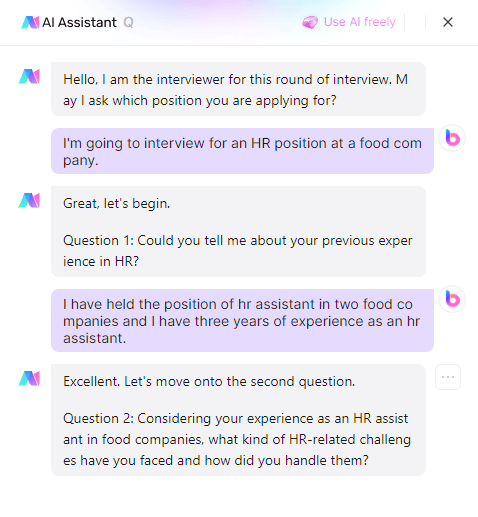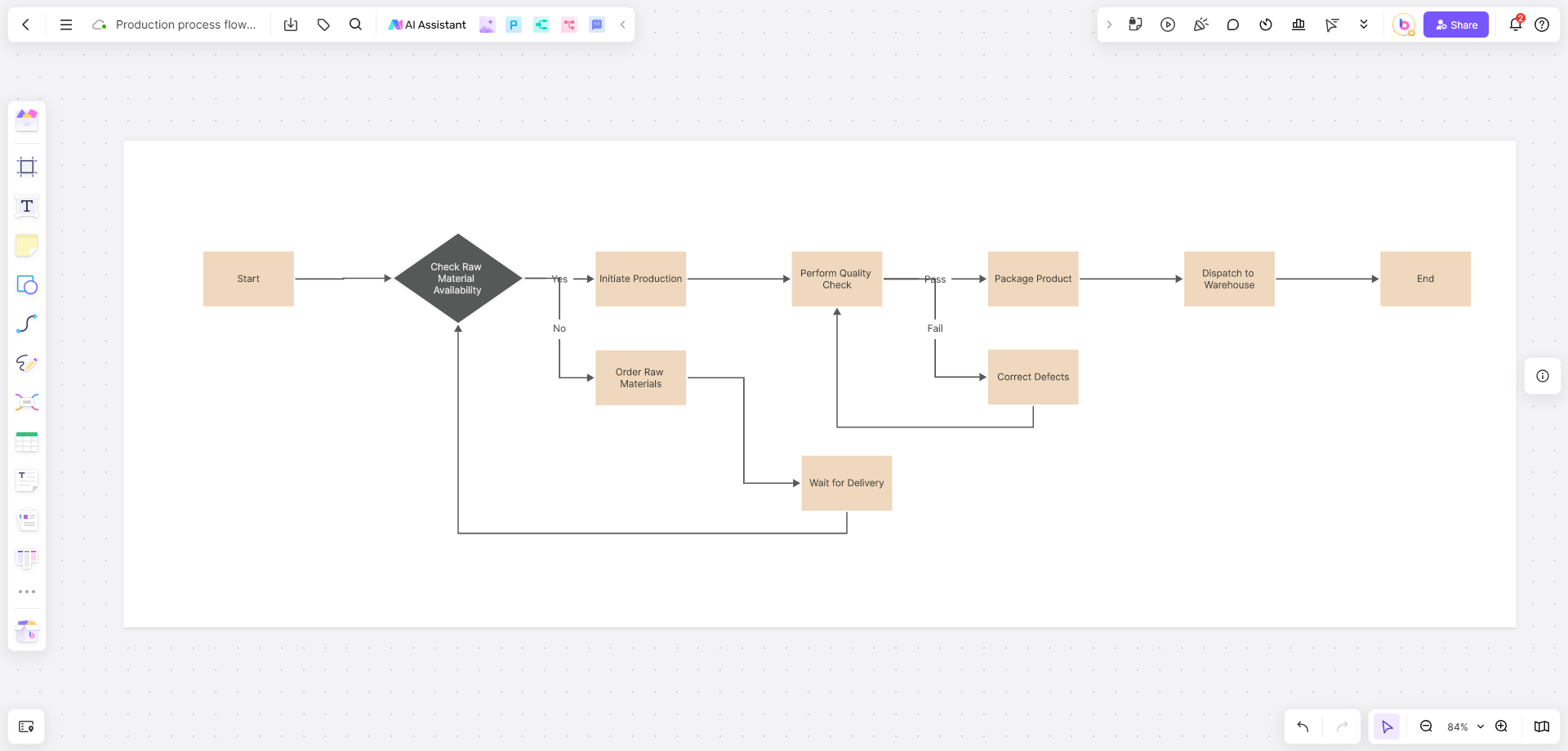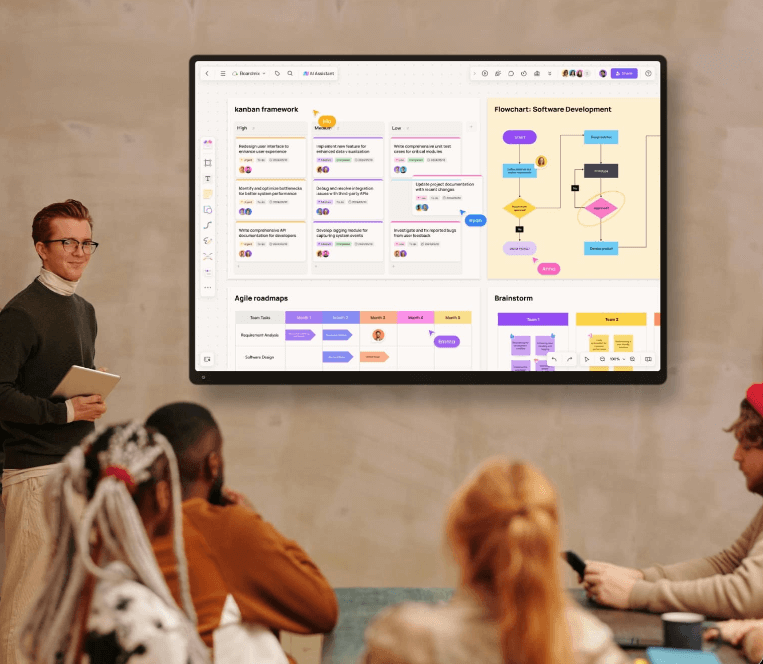Kanban boards are one of the most effective tools for project management, allowing teams to visually organize tasks and workflows. With the rise of digital collaboration tools, the Kanban board has evolved into an essential platform for enhancing productivity, streamlining communication, and achieving project goals. Let’s explore 10 Kanban board examples for project success and take a closer look at Boardmix, a versatile platform that helps you implement these boards seamlessly, driving better team collaboration and project outcomes.
Why Kanban Boards Are Essential for Project Management
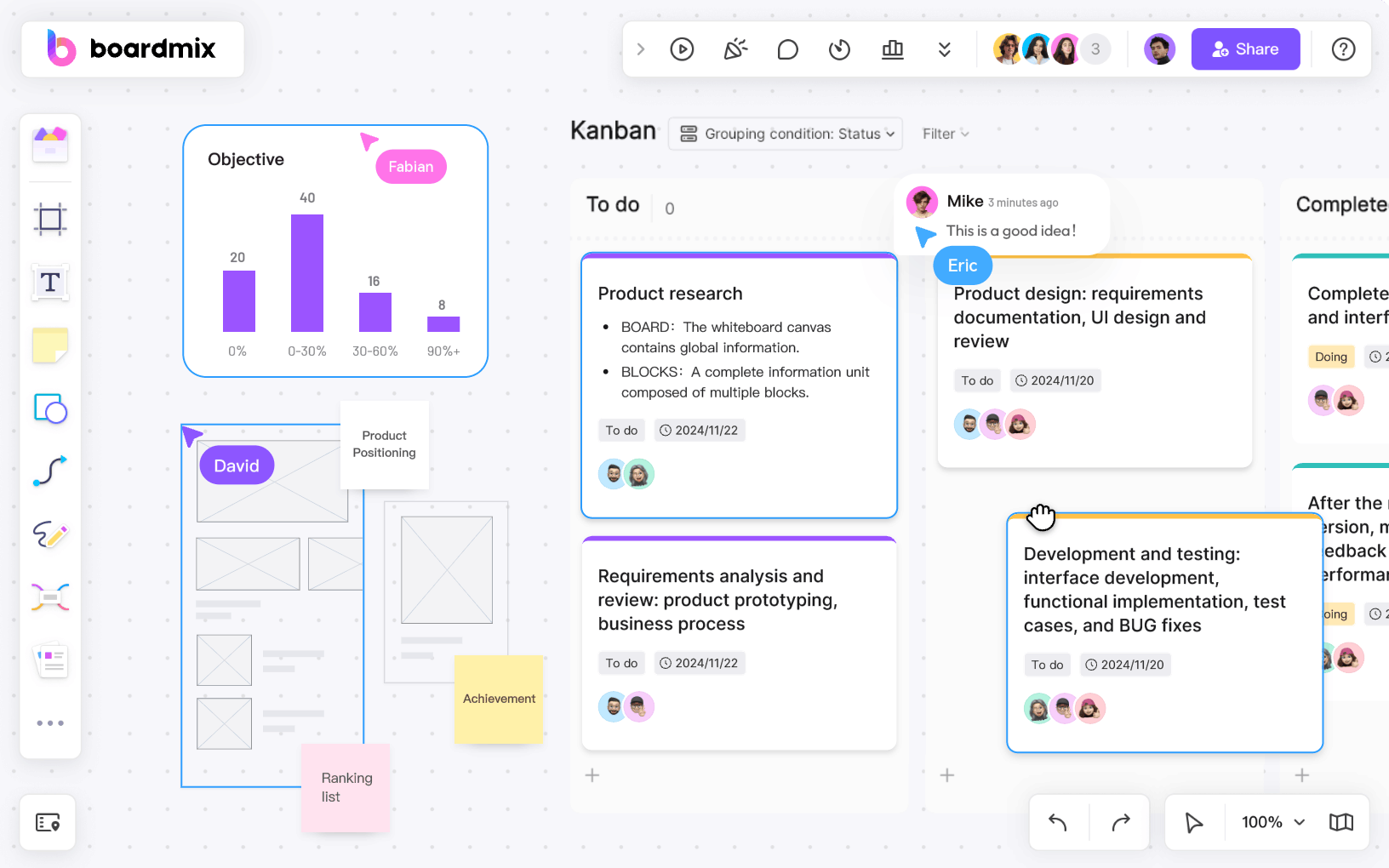
Kanban boards are widely used in project management because of their ability to provide clear visual representation of workflows, which improves team coordination and productivity. By organizing tasks visually, project managers can get a quick overview of a project’s status, identify potential bottlenecks, and ensure that team members are aligned with their responsibilities. This helps reduce confusion, streamline communication, and ultimately drive projects to successful completion.
Impact on Productivity
Kanban boards break down complex projects into smaller, more manageable tasks that can be tracked in real-time. This enables teams to focus on one task at a time, thus improving productivity and reducing the risk of errors. By visualizing work and limiting work-in-progress (WIP), teams can prioritize tasks more effectively, ensure consistent progress, and prevent overload.
Visualizing Workflows for Project Success
The visual nature of Kanban boards allows team members to see the entire project process at a glance. With simple columns like To-Do, In Progress, and Done, teams can easily track progress, identify delays, and make necessary adjustments. Furthermore, team members can collaboratively add new tasks, update statuses, and move tasks through stages—ensuring a seamless flow of work.
Thus, Kanban boards are invaluable tools for project management, enhancing productivity, streamlining communication, and ensuring efficient task management for successful project execution and team alignment.
What Makes a Great Kanban Board?
A great Kanban board is one that is simple, flexible, and adaptable. It should clearly represent your project’s workflow while allowing room for adjustments and real-time collaboration. Let’s take a look at the key elements that make a Kanban board truly effective.
Clear Stages for Tasks
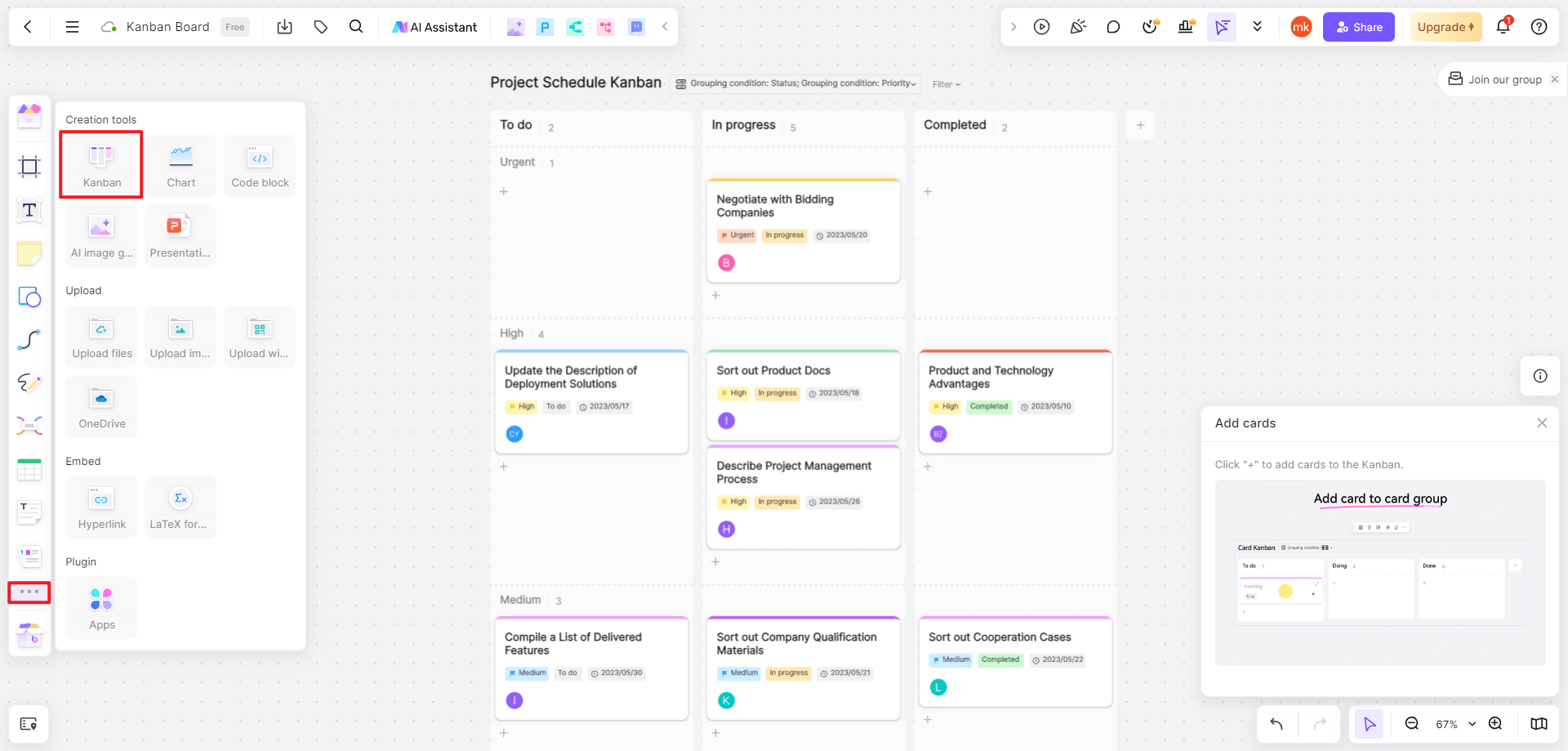
Clear stages for tasks are crucial in a Kanban board as they provide a simple, organized way to track progress. Dividing the board into distinct columns, such as To-Do, In Progress, and Done, allows team members to quickly understand where each task stands in the process. This structure not only provides clarity and transparency but also helps prevent confusion by setting clear expectations. With defined stages, teams can prioritize tasks, identify potential bottlenecks, and ensure that work is flowing smoothly. Additionally, this setup promotes accountability and encourages team members to stay focused on one task at a time.
Flexibility to Adapt to Team Needs
Every project is different, and so is every team. A great Kanban board is flexible enough to meet the unique needs of each team. This adaptability allows team members to modify the board as required, ensuring that it reflects changes in priorities, workflows, or tasks. With digital platforms, teams can create custom stages, add new columns, and even integrate the board with other tools to further enhance collaboration.
Real-Time Collaboration
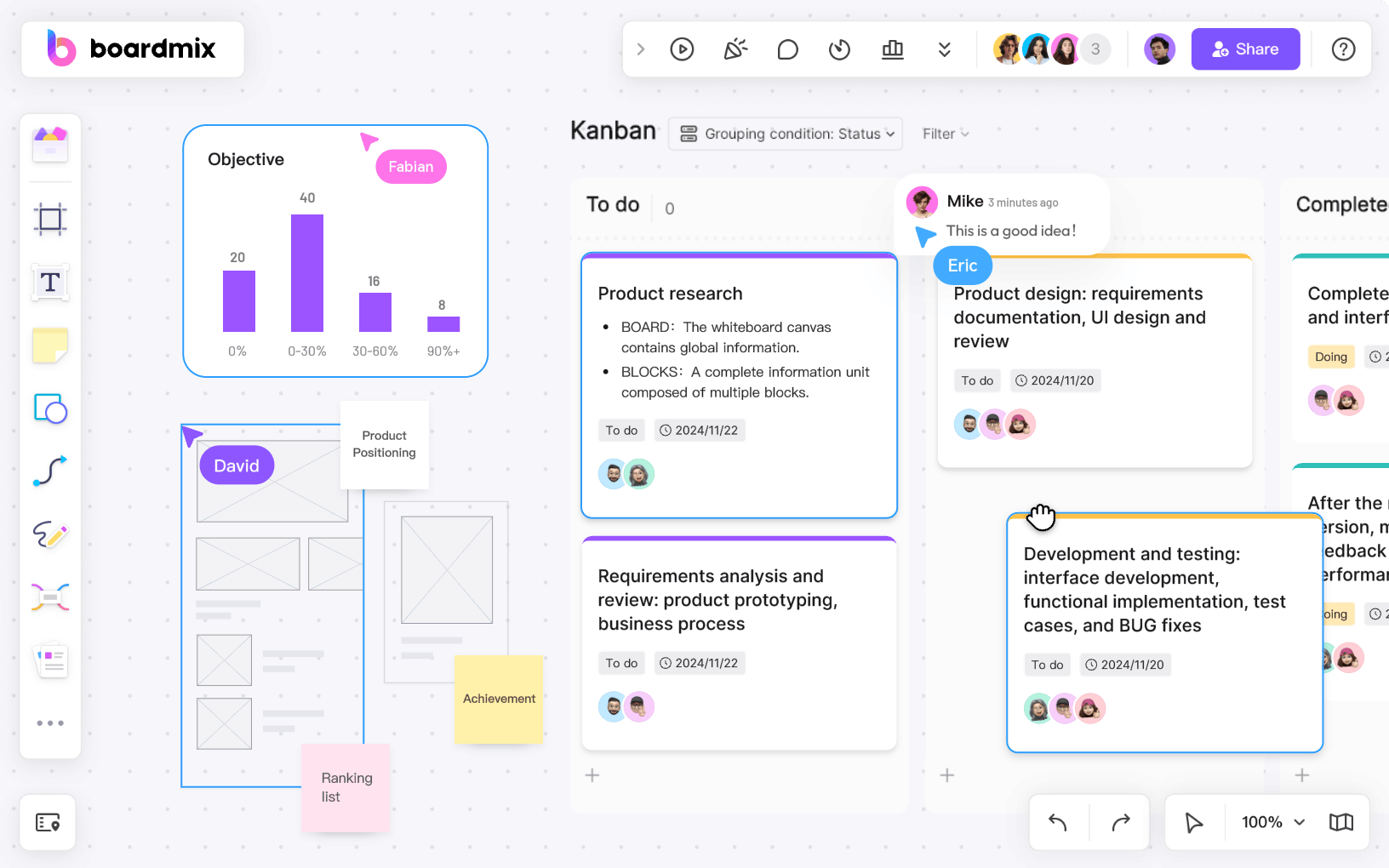
One of the greatest strengths of Kanban boards is their ability to facilitate real-time collaboration. When working on a project, team members need to stay aligned and updated on each task’s status. Kanban boards make this possible by allowing all team members to see changes as they happen. No matter if a task is moved to a new stage or a comment is added, everyone on the team can stay in sync with minimal effort.
10 Kanban Board Examples for Success
Kanban boards can be applied to various projects across different industries. Here are 10 Kanban board examples that can help your team organize workflows, boost productivity, and deliver exceptional results.
Software Development Workflow: Tracking Sprints and Bug Fixes
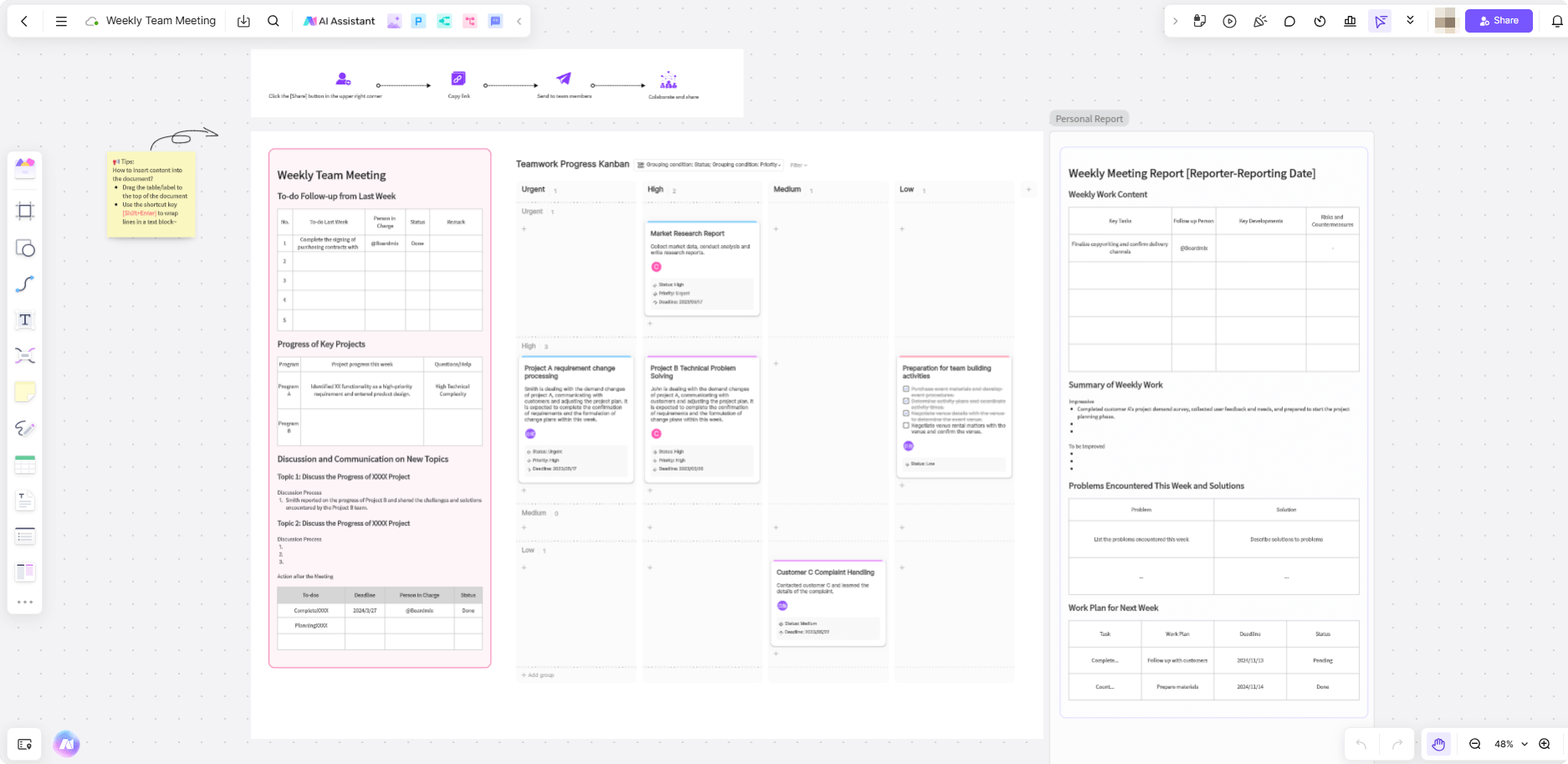
Software development teams often work in sprints, making Kanban boards an ideal tool for tracking progress. With columns dedicated to different sprint stages, like "Backlog," "In Progress," "Testing," and "Completed," teams can quickly visualize where tasks are in the development cycle. Tracking bug fixes and managing feature requests can also be done seamlessly, ensuring that nothing is missed.
Marketing Campaign: Planning, Executing, and Analyzing
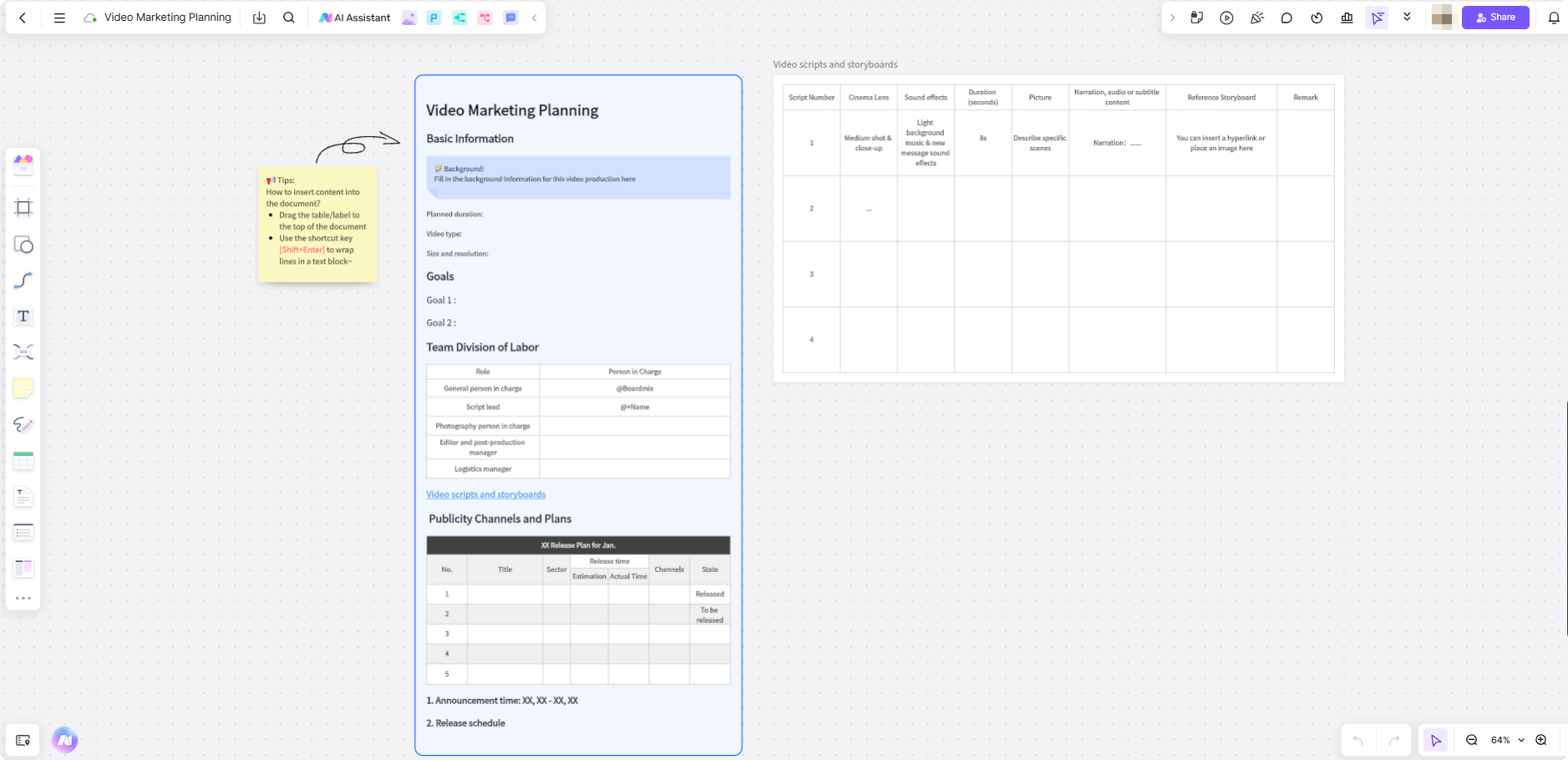
This Kanban helps streamline your marketing efforts. It organizes tasks into three stages: planning strategies, executing campaigns, and analyzing results. This workflow ensures clear task management, facilitates team collaboration, and enables tracking of progress, leading to more efficient and successful marketing campaigns.
Product Launch Plan: Organizing Tasks by Phase
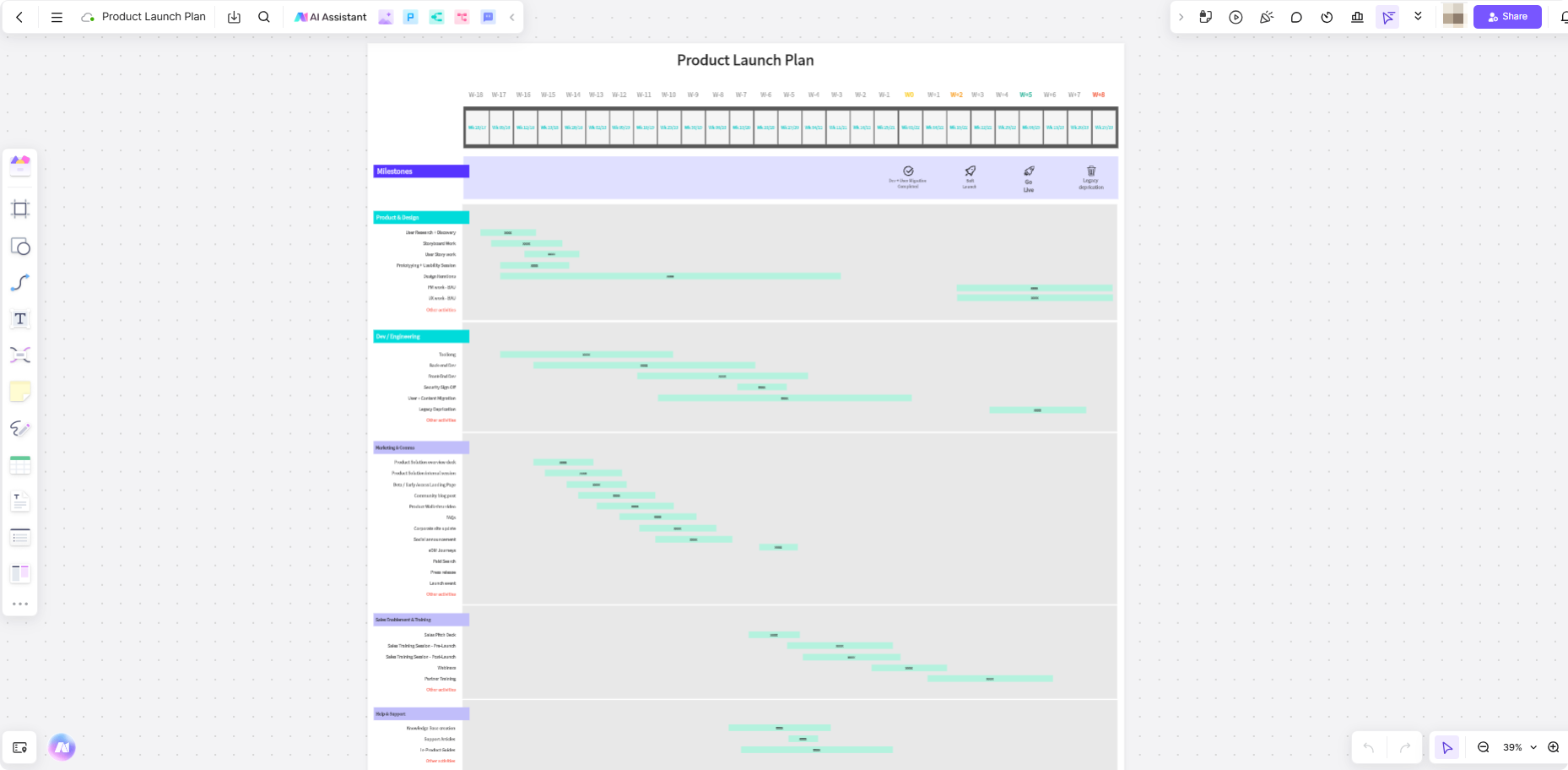
Launching a new product involves multiple stages, including planning, design, marketing, and distribution. A Kanban board can help organize tasks based on each phase of the product launch. With columns for each stage, team members can stay on track and ensure that all launch-related tasks are completed on time.
Content Creation Process: Drafting, Reviewing, and Publishing
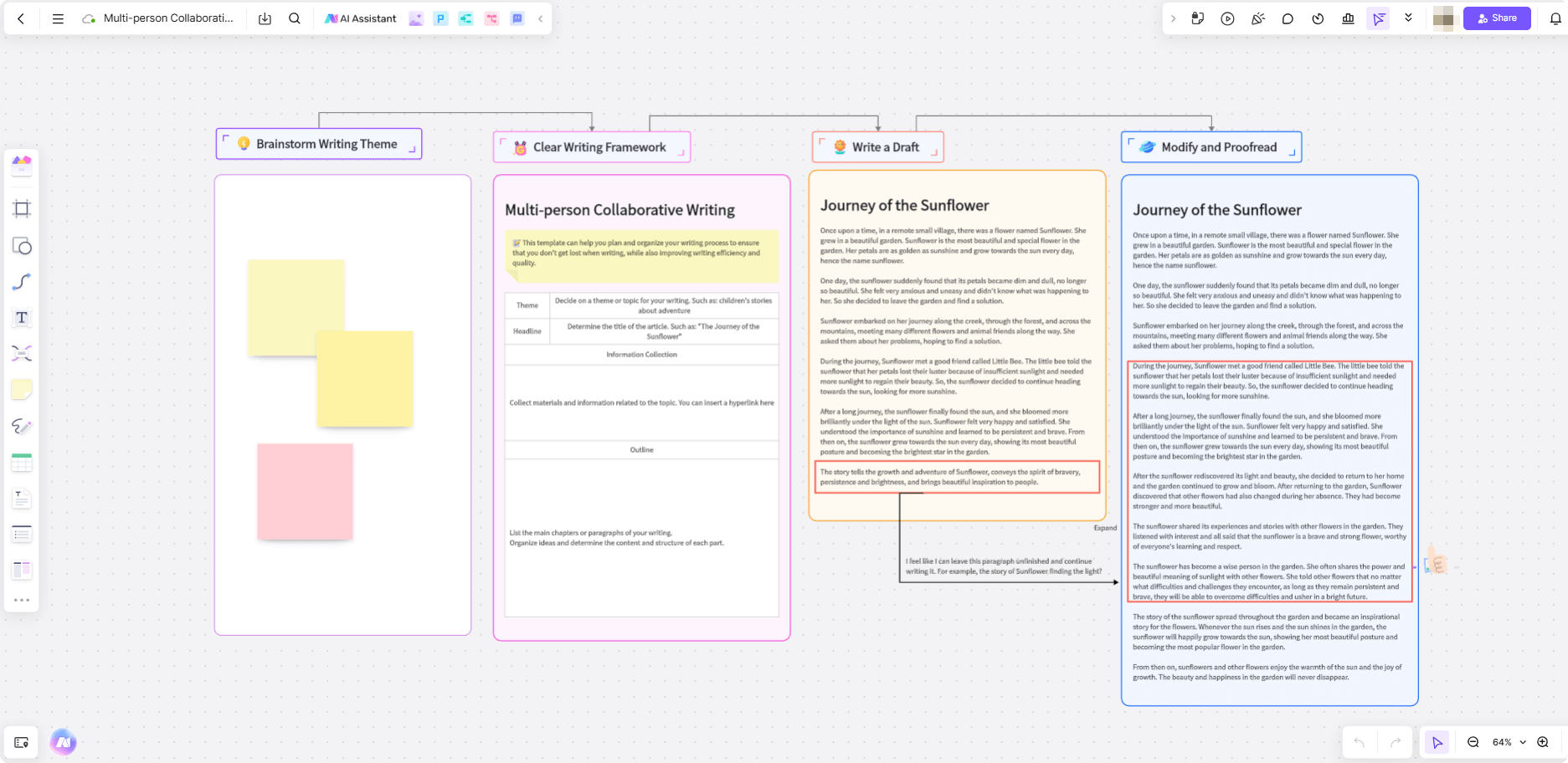
Content creation involves multiple stages, from drafting articles or videos to reviewing and publishing. A Kanban board can help writers, designers, and editors keep track of content in progress. By visualizing tasks and deadlines, teams can ensure smooth collaboration, faster turnarounds, and high-quality content.
Design Team Requirements: Organizing Design Tasks and Requirements
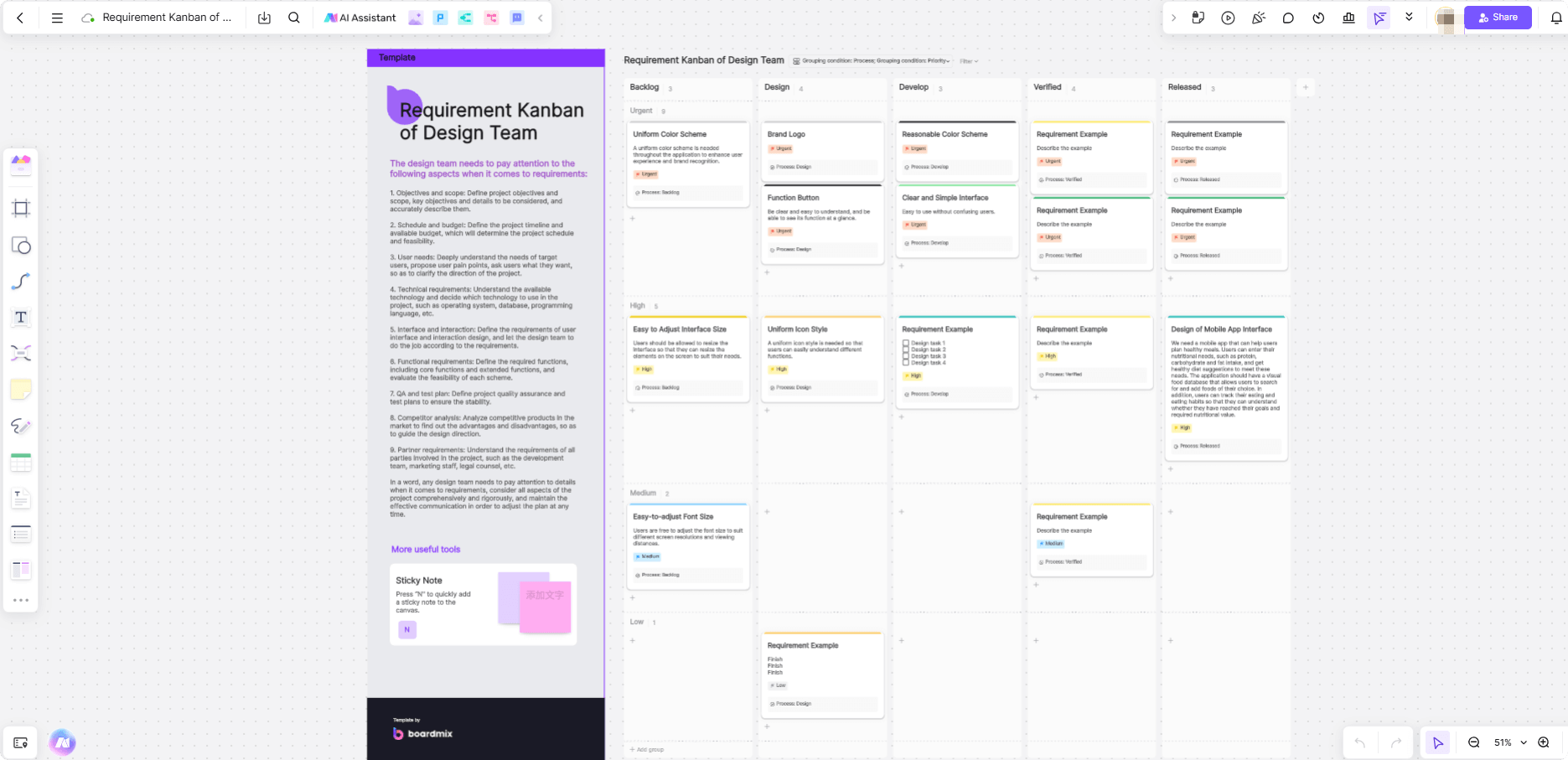
Design teams often juggle multiple projects simultaneously. With a Kanban board, designers can organize tasks based on priority, deadlines, and project phases. This helps design teams stay focused, collaborate effectively, and track the progress of all their creative work.
Event Planning: Coordinating Logistics and Schedules
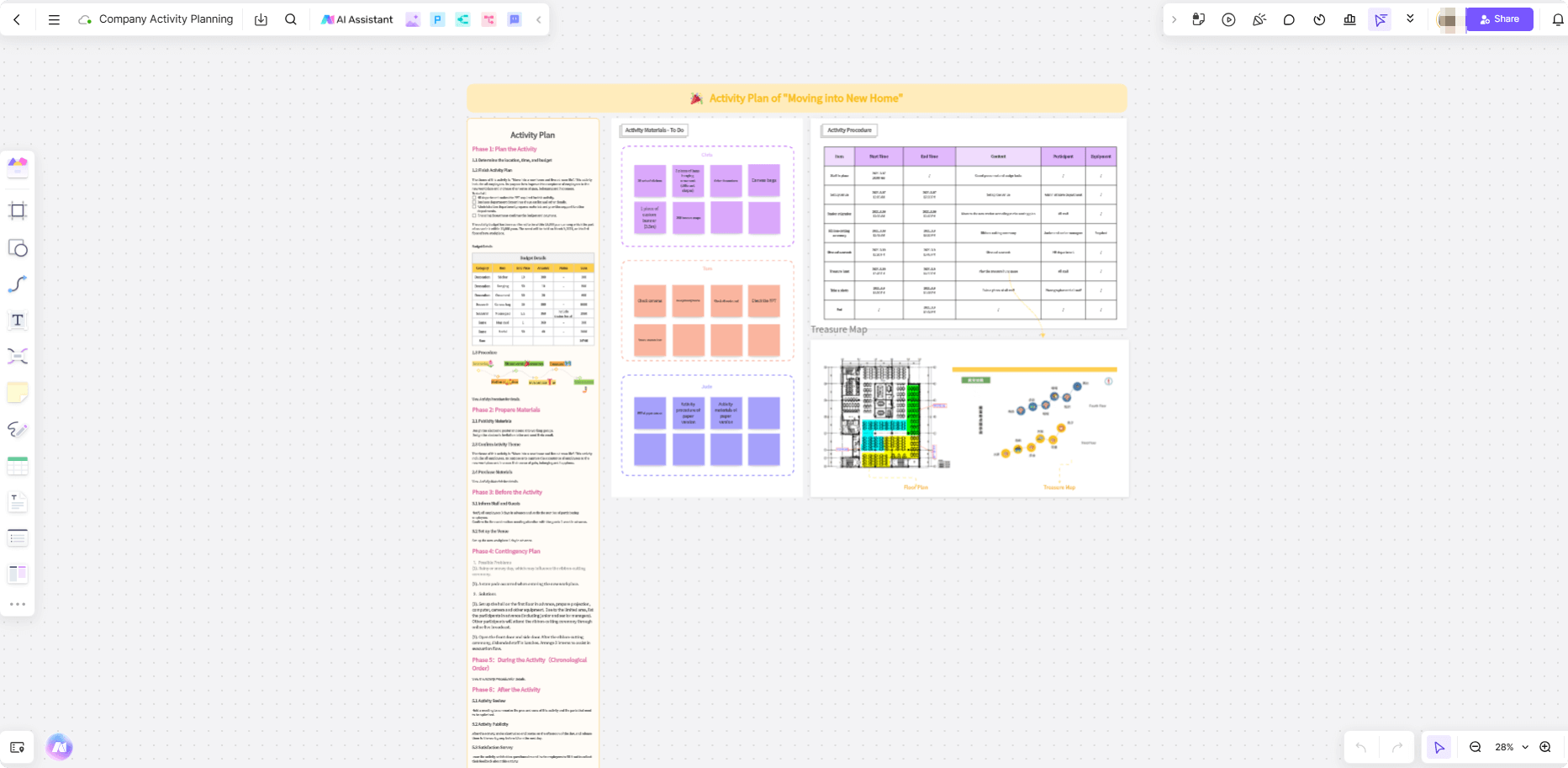
Event planning involves careful coordination of tasks, resources, and timelines. A Kanban board can help event planners stay organized by visualizing all aspects of the event, from venue selection to catering, transportation, and scheduling. This allows event planners to ensure everything is done on time and within budget.
Customer Support Workflow: Managing Tickets and Responses
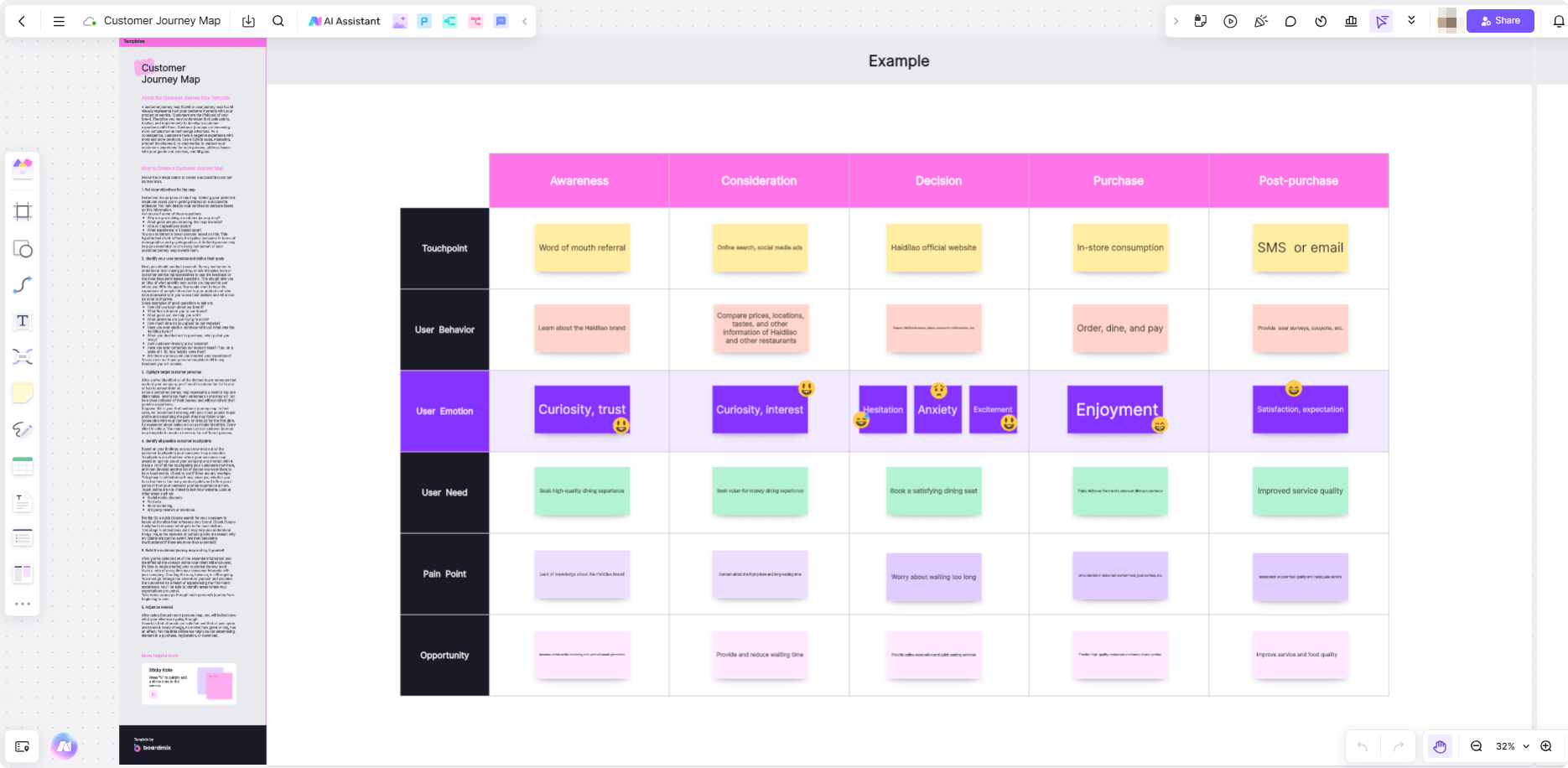
Customer support teams can use this Kanban boards example to track incoming tickets, responses, and resolutions. By organizing tasks into columns like "New Tickets," "In Progress," and "Resolved," support teams can ensure that customer issues are addressed promptly and efficiently.
HR Onboarding Process: Assigning and Completing New Hire Tasks
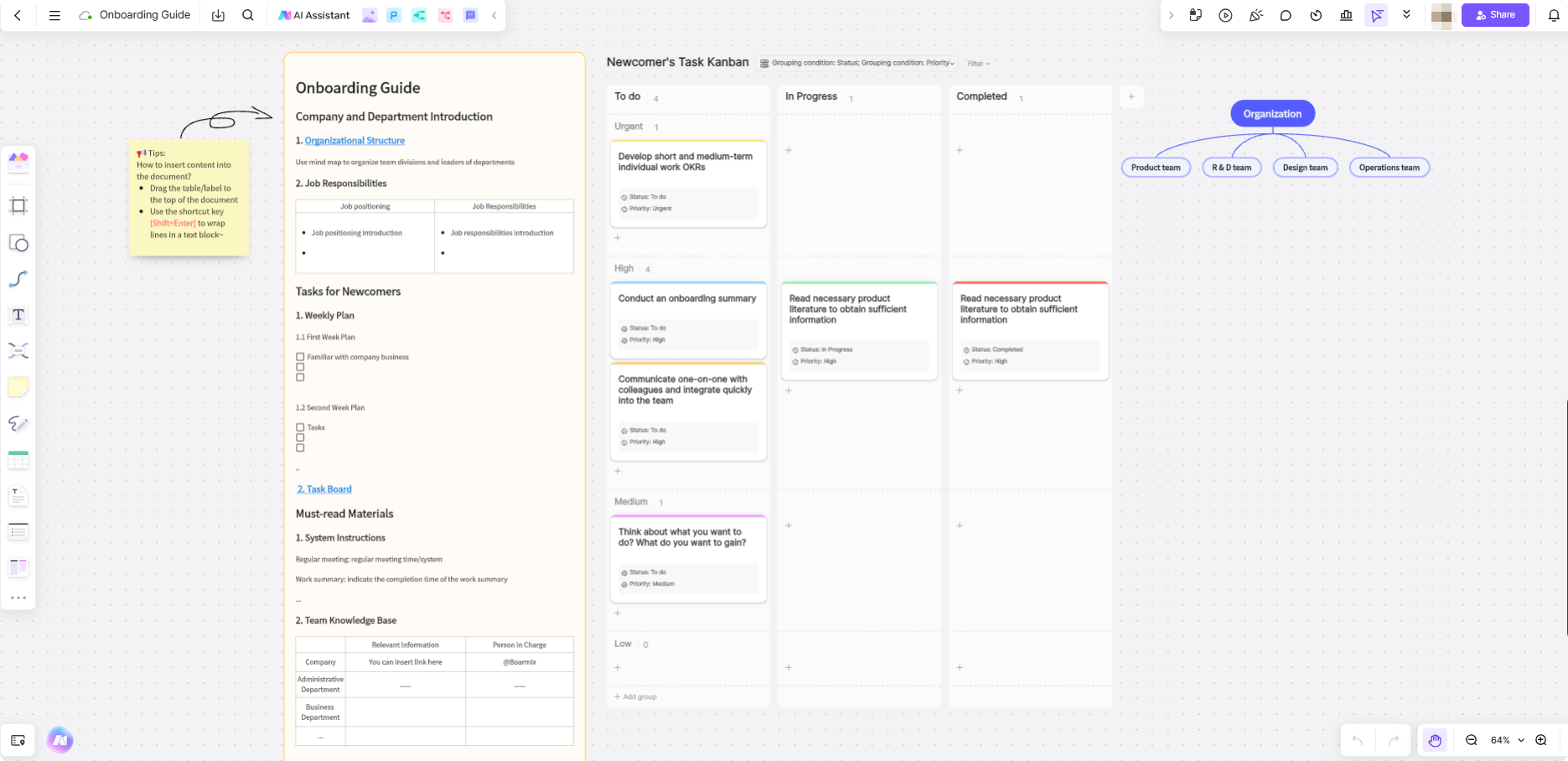
For HR teams, managing the onboarding process for new employees can be complex.
This Kanban board example can help HR professionals organize tasks related to onboarding, such as paperwork, training, and equipment setup. This ensures that new hires are successfully integrated into the company.
Learning Tasks Kanban: Prioritizing Learning Goals
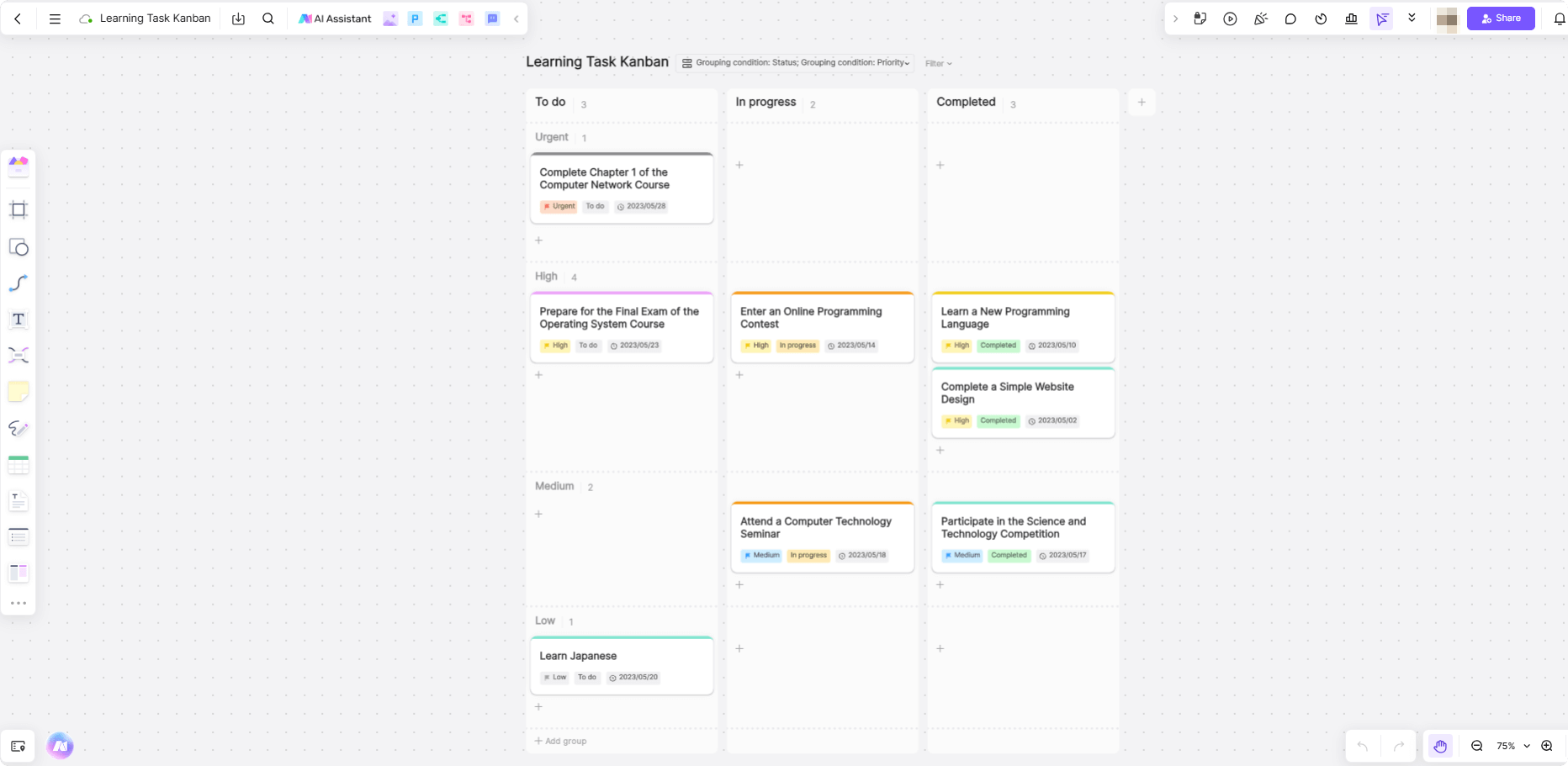
Individuals and teams can use Kanban boards to organize learning goals. From courses to self-study tasks, a Learning Task Kanban helps prioritize goals and track progress over time. This is especially useful for personal development or professional training.
Weekly Team Retrospectives: Reviewing Completed Tasks and Insights

After each week or sprint, teams can review completed tasks, discuss challenges, and share insights during retrospectives. A Kanban board can help visualize tasks completed, track areas for improvement, and align team members for the next phase.
These 10 Kanban board examples can be customized to fit the needs of your team or project. From managing software development to planning a marketing campaign, Kanban boards help keep tasks organized and progress on track.
Best Practices for Using Kanban Boards
To make the most out of your Kanban board, consider these best practices:
Limit Work-in-Progress Tasks to Avoid Bottlenecks
One of the core principles of Kanban is to limit the number of tasks in progress at any given time. This helps prevent bottlenecks and ensures that tasks are completed before new ones are started. By limiting WIP, teams can focus on completing tasks efficiently.
Regularly Update the Board for Accurate Tracking
To maintain an accurate view of progress, it’s important to regularly update your Kanban board. Team members should move tasks through stages, mark completed tasks, and add new ones as needed. Regular updates ensure that everyone is on the same page and that no task is forgotten.
Use Color Coding and Tags for clarity
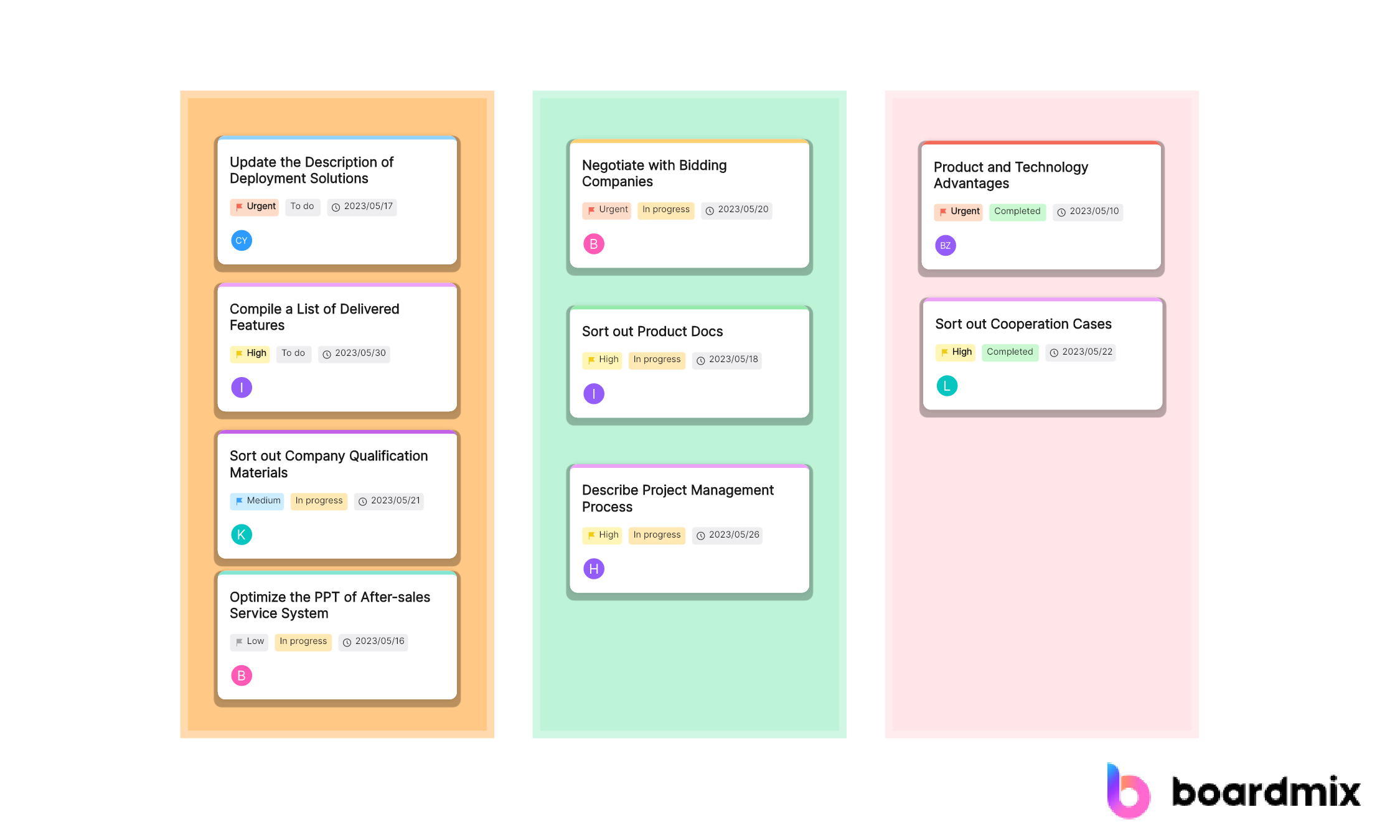
Adding color coding or tags to your Kanban board can help differentiate between tasks, priorities, or team members. This adds clarity to your board and makes it easier to identify specific types of work at a glance.
Review the Board in Regular Meetings
Regularly reviewing the Kanban board during team meetings ensures everyone is aligned on priorities and deadlines. It’s an opportunity to discuss any roadblocks, adjust timelines, or reassign tasks as necessary. By incorporating the board into meetings, teams foster continuous collaboration, address issues proactively, and maintain transparency in the workflow.
Conclusion
Kanban boards are an essential tool for managing projects, fostering collaboration, and boosting productivity. Whether you're managing a product launch, planning a marketing campaign, or supporting a team through a sprint, Kanban boards help keep things organized and ensure everyone stays aligned.
Explore Boardmix for customizable and collaborative Kanban board solutions that can enhance your project management experience. Start using Boardmix today to streamline your workflows and achieve project success!




